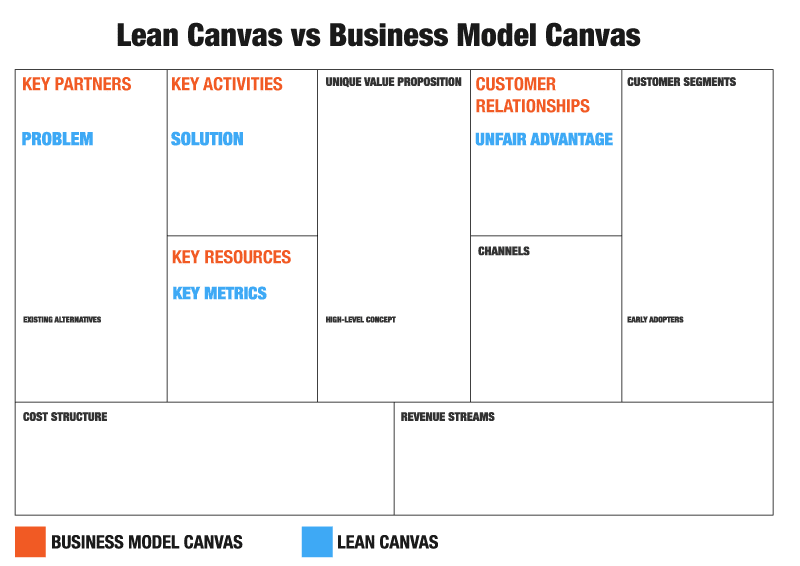How To Create an App for Your Business
Creating an app for business use can increase productivity and improve consistency for greater quality control and customer satisfaction. But...
5 min read
Written by Laura MacPherson, Sep 19, 2019

Most people would agree that creating a business plan is a critical early step in founding or expanding a business. Many sources of capital, including banks, require one. And while a business plan works well for established companies with a track record of reliable data to base it on, for startups, a traditional business plan is essentially guesswork. Without a history of sales and customer feedback, you’re basing the plan on untested assumptions. The Business Model Canvas is a better and more reliable tool for startups because it’s a representation of how you understand the business at a specific point in time.
The Business Model Canvas is designed to be continually updated as you talk to customers, learn, and validate or invalidate your assumptions. A startup continually produces new versions of the Business Model Canvas that capture any new information and new assumptions that need to be validated.
What makes the template powerful is that it utilizes a process of validating assumptions integrating customer interviews and then iterating. This article will show how using the Business Model Canvas will benefit your startup and how to use it.
The Business Model Canvas template was originally developed by Alexander Osterwalder, a Swiss business theorist and entrepreneur, and Dr. Yves Pigneur, a Belgian computer scientist. They designed the model to help develop new business models or to document and analyze existing business models.
This visual tool helps you to understand, analyze, and get creative with your business model in a structured and straightforward way. The Business Model Canvas provides a holistic view of your business while focusing on the most critical elements. Using it provides insights about the customers you serve, the value proposition offered through each of your channels, and how your company makes money.
The intent of the Business Model Canvas is to encourage discussion, investigation, and innovation to help your organization create, evolve, or change your business model. There are three key benefits of using it.
This tool covers the major considerations impacting your business and shows the direction your organization is moving. It provides an easy, visual representation to enable decision-makers to model business strategies and changes. Due to its visual nature, it’s easy to conceptualize and to share.
You can use the Business Model Canvas to systematically model changes to the business and to analyze the impacts and potential trade-offs of proposed changes. It’s especially useful for teams to use when analyzing different ideas and options. Because the model is under a Creative Commons license, you can print out copies or tack up a poster-sized version on the wall for strategy sessions. Many teams use sticky notes to track ideas or options and to easily show the shifts caused by proposed changes.
The canvas enables a leadership team to better understand how the building blocks relate to each other and how these relationships can be changed. This is especially important with a startup and can be used both to establish an initial business model and also to adapt it based on new learnings about any of the blocks. This valuable work can highlight gaps and opportunities.
As Joe Gibson, a lecturer for Clemson’s University’s MBA program, shared with us in a recent conversation, various people have created their own versions of the Business Model Canvas for specific niches. Ash Maurya, the author of Running Lean and Scaling Lean, was one of these, who tweaked the model to better fit startups using the Lean model.
Gibson says both versions are helpful for startups. Although there is some overlap between the two, each has elements it emphasizes over the other, which can be valuable for a more thorough analysis. Gibson teaches both versions, integrating them together, while noting that he especially likes the Lean version because of its emphasis on the problem and the customers. He says, “It all starts with the customers. What’s the problem, and who has it? And what’s my solution? Everything else flows from there.”
Both the original Business Model Canvas and the Lean version are composed of nine building blocks. Although there is overlap, they differ somewhat significantly. Let’s look at each component for both versions.

Image credit: Gary Fox
Key partners are the suppliers and partners that help your startup provide value to customers. Establishing a network of key partners early on and building solid relationships with them will ensure consistency for your customers.
The Lean version starts with the problem(s) you solve and the existing ways that the problem is being solved. Maurya begins with the problem because of its importance. He says, “Most startups fail, not because they fail to build what they set out to build, but because they waste time, money, and effort building the wrong product. I attribute a significant contributor to this failure to a lack of proper ‘problem understanding’ from the start.”
There are critical activities that must occur for your business model to be effective. You can test the importance of each by adding and removing them, analyzing the value by the impact on your revenue stream.
Maurya’s version pulls out Solution into its own category as separate from the Value Proposition for emphasis. For each problem you solve for each market segment, you’ll want a thorough understanding of the solution you’re offering.
Organizational assets, including human, physical, financial, and intellectual, are essential to understand. These resources give you the fuel you’ll need to take your business where you want it to go. Determining the investment level is important for leveraging key resources as it may impact your startup’s sustainability.
How will you know how your business is doing? You need logical, fact-based ways to measure success. Don’t rely on your emotions or assumptions.
What is the value you’re giving your customers overall with your products and services? How is your solution different from and better than the competition? What clear and compelling message will pique a prospect’s interest?
Organizations need to determine the type of relationships they’ll have with customers to ensure sustainability. What costs accompany maintaining these relationships? This should include the relationship with potential, new, and ongoing customers.
Your Unfair Advantage is “something that can’t be copied or bought”. How will you prevent copycats from replicating what you’re doing?
The delivery of your products and services is a key component of what you offer. What are your paths to your customers? Will you use a website or an app, or will it be a physical item that is delivered? You can select one or multiple channels for each customer channel, based on what makes the most sense for their needs.
Consider your customers or potential customers and how your startup’s products and services are meeting their needs to determine your customer segments. List in priority order and include future potential customers as well as current segments. Maurya adds an emphasis on early adopters here. Your initial targets may differ slightly (or significantly) from who you want to eventually target.
It’s essential to identify and understanding your startup’s fixed and variable costs. Analyzing the impacts that choices have on these costs helps leadership to evaluate the financial trade-offs of potential decisions.
What is your monetization strategy for how your startup will make money? This will include the pricing structure and, if there will be membership, flat fees, or rates based on utilization.
Start by mapping out your business at a very high level. Only include the most important information. Then link the blocks. Every value proposition should have a customer segment and revenue stream.
Once you believe the content is sound, run tests to validate your initial assumptions. Talk to prospective customers. Then, continue to model new choices as you continue to test your assumptions and iterate.
The Business Model Canvas is powerful because it enables startup teams to see how the building blocks are interrelated and how these relationships can be modified to increase efficiency and effectiveness. It’s a powerful visual template that can be used not only at the beginning stages of a startup, but indefinitely.
Want to learn how we help you hone your app idea? Get in touch, and we’ll schedule a call.
Subscribe to our newsletter.

Creating an app for business use can increase productivity and improve consistency for greater quality control and customer satisfaction. But...


Mobile application user interface (UI) design refers to the choices surrounding an application’s visual and interactive user experience. These...
Post
Share